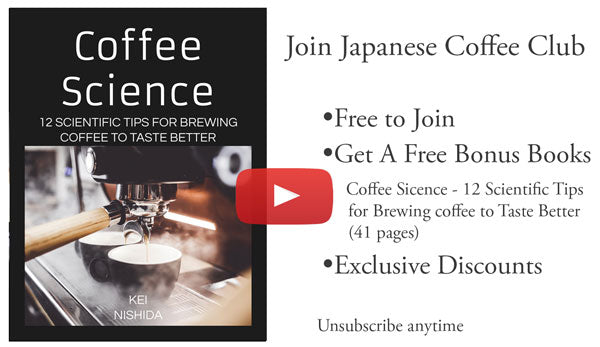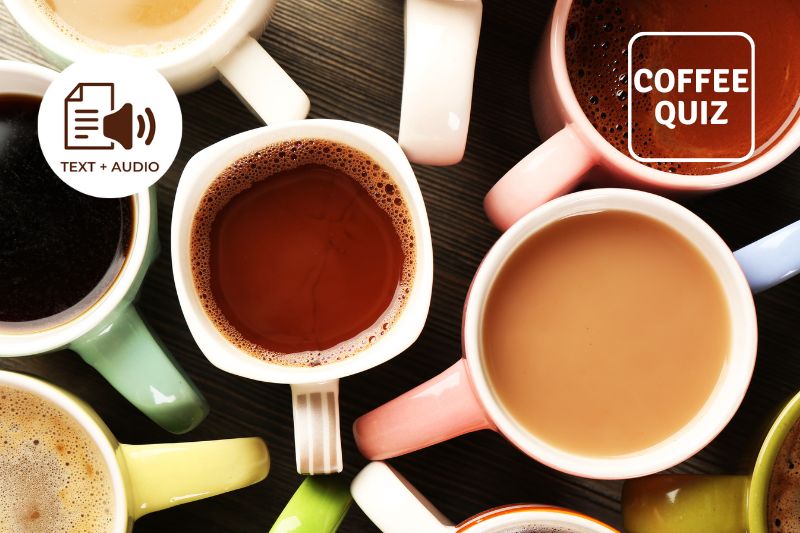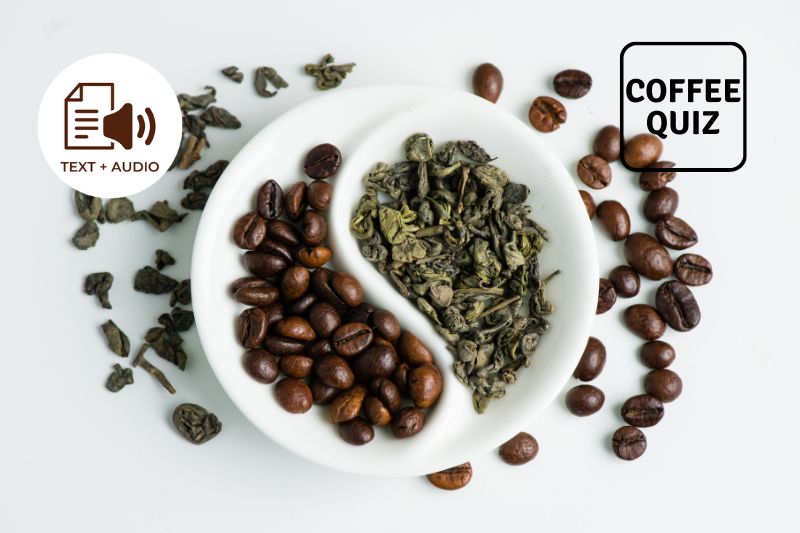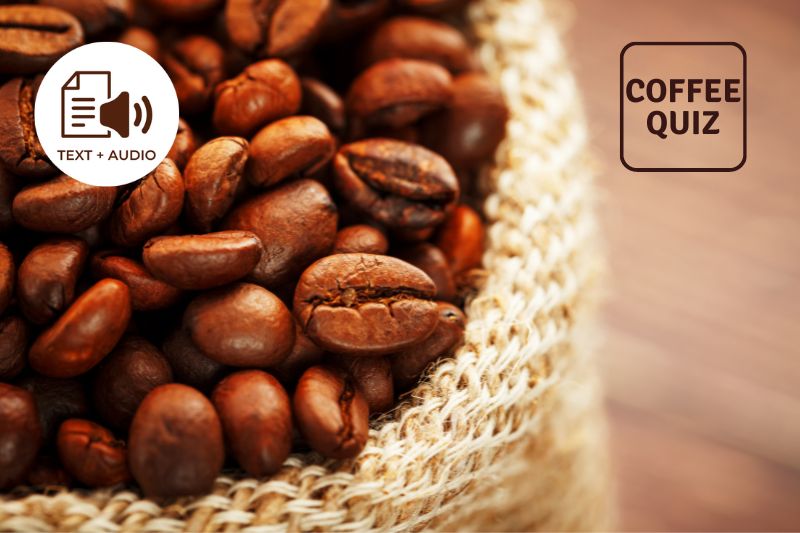One of the things I love when buying coffee is browsing the shelves of my local roastery, deciding which pack of coffee will be my next.
I do have some personal favorites, sure. But you leave so much flavor and aroma on the table, when you don’t try new things every once in a while…
The Single Origin Blends I usually go for, always have variety, grind, roast, etc. written on the outside. Sometimes something that describes their taste as well, but it was only recently that I noticed…
What is the Bean Size doing here?

So, confused as I was, I asked one of the roasters. What he told me was that, when it comes to coffee beans, size is one of the vital things that define their quality.
But that made me wonder…
Why does that matter? How does it impact the flavor? Are larger or smaller beans better?
So without further ado, this is what I found!!!
Size-based Grading System
Before going forward with the big questions, however, let’s cover up some basics, shall we?
During the processing of the beans, either at the start or the finish, depending on the producer, coffee is sorted out based on its size in a procedure called Screening.
This process basically involves several sieves with different hole sizes, from which the beans are passed through.
The sieves, large and square as they are, are called Screens (hence the name Screening), and their hole sizes range from 20/64 of an inch (8.0 mm), to 8/64 of an inch (3.2 mm), used for sorting the coffee beans based on their size.
The bean sizes from 20/64 to 8/64 are called “Grades”, and are used, in most cases, as a quality determinant.

Why size matters?
In general, the larger the beans, the better the flavor.
This has to do mainly with the time the plant has had to grow and ripen, and as an immediate consequence, the time it had to develop its aroma and taste.
The largest beans of Arabica and Robusta, the two kinds of coffee that represent around 97% of worldwide production, are called elephants, and they are 19/64 and 20/64 of an inch in size. They are an exception, as well as Peaberries, to the general size-flavor relation, and we will talk more about them later.
The Different names and traits of Commercial Sizes
Coffee beans from 18/64 to 17/64 of an inch are simply called “Large” in industrial terms but come with different names depending on their place of origin.
For example, they can be found as Supremo (Colombia), Superior (Central America) and AA (Africa and India). If you see one of these names on the package, it is an indicator of high-quality beans.
It means they had time to develop their profile and if the processing is done right, that will be evident in your cup!
After them, we have the “Medium” size beans (Excelso, Segundas or AB), that range from 15/64 to 16/64 of an inch in size.
Despite not having as much time as the large beans to ripen, there are some very-well processed medium size beans that can easily go on par, or even exceed their slightly larger relatives in overall cup quality.

Next ones are the “Small” beans (UCQ, Terceras, or C), which size at 14/64 of an inch, and are the lowest quality with acceptable, satisfactory taste.
Of course, that isn’t always true because in some countries, like Ethiopia, which produce smaller beans in general, these beans can lead to very vivid flavors and rich aromas when managed properly.
Anything smaller than 14/64 of an inch is called a “Shell” and is considered a cheap coffee bean size.
There is an exception to that as well, the Peaberry beans, of which we will talk about in the next section!
Exceptions
There are two main exceptions where the size-quality relation breaks. These exceptions are Elephant sized beans, and Peaberries.
Elephant beans, which are mainly found in Africa and India, encounter problems when it comes to roasting, and that’s the reason they are not considered good.
Due to their size, they tend to be softer than other beans, so they break earlier than supposed to, resulting in an imbalance of flavors.
The Elephant exception is only true for Arabica and Robusta varieties, though. There are 2 more, less dominant varieties, Liberica and Excelsa, that account for 3% of global production.
These varieties grow much taller than the average tree (up to 20m) and produce beans as large as Elephants. However they are considered very high quality because they are not as soft, so the roasting process flows much smoother.
Peaberries on the other hand, while incredibly small (8/64 to 13/64 of an inch), tend to be one of the most flavorful and “cream of the crop” beans, known for their premium profile and delightful aromas.

What leads to the size?
Size is a result of several separate factors.
The main determinant of coffee size is the variety of the beans, however, different conditions such as weather and altitude can also impact the size.
If all conditions, from soil to altitude to weather are not met, a coffee bean can end up as small as half the average size of its variety, resulting, in most cases, in a suboptimal result.
It should be noted that coffee cherries, from which the beans are extracted, don’t grow at the same speed even under the same conditions, so that’s why a single crop can consist of a range of different sizes.
Conclusion
After this article, I am confident many of you will start noticing the size of your beans more often.
I believe that’s a good thing. Now you know much more about what each size means for your own cup.
That said, there are many roasteries that blend all sizes of beans and generate fascinating results, taking everything into account, from variety to roast to what brewing method will be used in each blend.
The bottom line is that… Yes, size does matter when it comes to your daily cup, but the only way to really know if you like it, is to try it yourself!!
Get Free Bonus Books

Sign up for free to the Coffee Club to get advice and exclusive articles about how to choose Japanese Coffee, and tips, tricks, and recipes for enjoying Japanese coffee.
About the author
Kei Nishida
Author, CEO Dream of Japan
Certification: PMP, BS in Computer Science
Education: Western Washington University
Kei Nishida is a passionate Japanese tea and coffee connoisseur, writer, and the founder and CEO of Japanese Coffee Co. and Japanese Green Tea Co., both part of Dream of Japan.
His journey began with a mission to introduce the world to the unparalleled quality of Japanese green tea. Through Japanese Green Tea Co., he established the only company that sources premium tea grown in nutrient-rich sugarcane soil—an innovation that led to multiple Global Tea Champion awards.
Building on this success and his passion for Japanese craftsmanship, Kei expanded into the world of coffee, pioneering the launch of Japanese Coffee Co., the first company to bring Sumiyaki charcoal-roasted coffee to a global audience. His dedication to authenticity and quality ensures that this traditional Japanese roasting method, once a well-kept secret, is now enjoyed worldwide.
Beyond tea and coffee, Kei has also introduced Japan’s legendary craftsmanship to the world through Japanese Knife Co., making handmade katana-style knives—crafted by a renowned katana maker—available outside Japan for the first time.
Kei’s journey continues as he seeks out and shares the hidden treasures of Japan, one cup and one blade at a time.
Learn more about Kei









